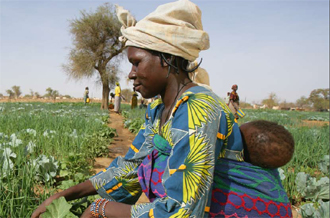Reducing vulnerability of natural resource dependent livelihoods in Boucles du Mouhoun Forest Corridor and Mare d’Oursi Wetlands Basin in Burkina Faso
Project Overview
With more than 70% of the population live on less than $2 per day, Burkina Faso’s economy is heavily dependent on natural resources. In the riparian areas of the Boucles du Mouhoun Forest Corridor (BdM) and the Mare d’Oursi Wetlands Basin (MdO) approximately 150,000 people are directly dependent on natural assets such water, pasture, forests and fertile soil for a living. The project aims to increase the adaptive capacity and reduce vulnerability of the riparian population through timely dissemination of risk information and strengthening of physical, natural and social assets in the two regions.
Project Details
Key Results and Outputs
The project has three major components with the following expected outcomes –
Component 1 aims at establishing a knowledge support platform on climate change impacts and risks – under this a geo-based climatic, agro-ecological and hydrological information system (Outcome 1.1) will be operational by the end of year 1; approx. 30 national and provincial planners, plus 235 local commune leaders and 50 staff from NGOs/CSOs will be trained on the use and interpretation of analyses from the established information system (Outcome 1.2)
Component 2 deals with the vulnerability reduction and strengthening of resilience in the management of natural and social assets in the project area – this includes cost-effective rewetting and replanting/ protection of indigenous grasses and herbaceous vegetation resilient to significant climatic variance (Outcome 2.1); ensuring flood and erosion control through a “surgical” and climate anticipatory approach (Outcome 2.2); protection of gazetted forests against climate induced bushfire (Outcome 2.3); establishment of an equitable and climate resilient plan for the use of pasture and water resources (Outcome 2.4); demonstration of polyculture and adaptive agro-ecological production systems in communal lands (Outcome 2.5) and; training of local commune leaders and resource users in climate adaptive and anticipatory management of natural and social assets (Outcome 2.6).
Component 3 aims at mainstreaming Climate change adaptation into local and regional development planning and finance. This will be achieved through – integration of climate risk management and climate resilient landscape management into the management (or master) plans of the project area (Outcome 3.1); incorporation of climate resilient poly-culture model into relevant forestry, agricultural and livestock management strategies, plans and investments (Outcome 3.2) and; establishment of wide collaboration frameworks for learning and sharing climate change concerns and options (Outcome 3.3).



